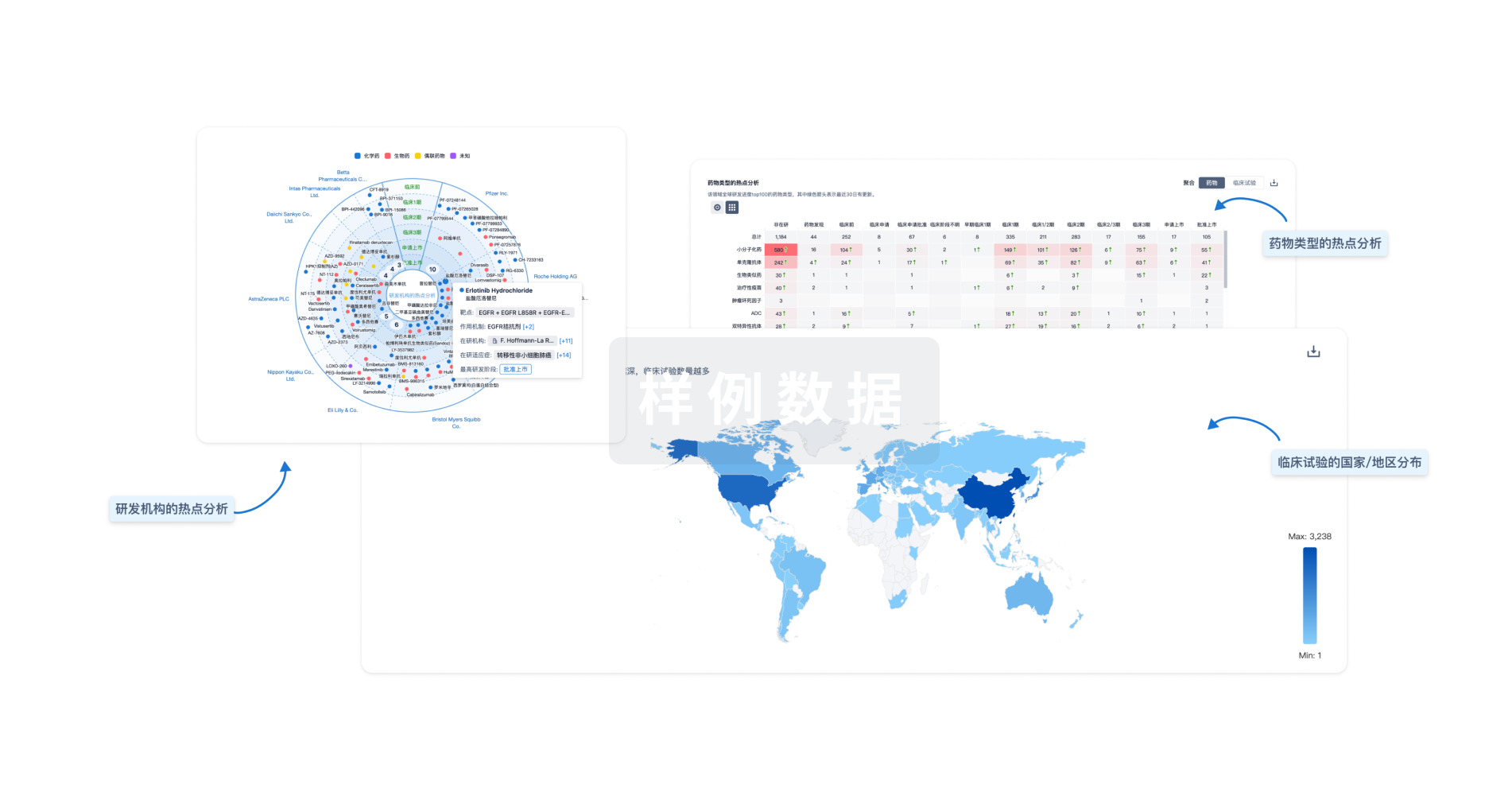预约演示
更新于:2025-05-07
Central Nervous System Cysts
中枢神经系统囊肿
更新于:2025-05-07
基本信息
别名 CNS Cyst、CNS Cysts、CNS cyst + [60] |
简介 Congenital or acquired cysts of the brain, spinal cord, or meninges which may remain stable in size or undergo progressive enlargement. |
关联
18
项与 中枢神经系统囊肿 相关的临床试验CTRI/2024/09/073349
Baseline cyst size guided increase in duration for steroid therapy in viable parenchymal neurocysticercosis a pilot prospective interventional study - NIL
开始日期2024-09-14 |
申办/合作机构- |
NCT05468788
Evaluating the Use of Theatre to Decrease Depression and Anxiety Among Adolescents With Chronic Medical Conditions (CMCs)
Investigators are building a program that uses improvisation to teach kids and teens with medical issues healthy ways to cope. Medical issues have been linked to anxiety and depression. Doing theatre can prevent these complications. Participants will meet in groups of about ten for ten weeks to do improvisation that is fun and supportive. Participants will meet with a study team member before the program starts, after the program ends, six months after the program ends, and twelve months after the program ends. At these visits, participants will be screened for anxiety, depression, quality of life, and will be given a short interview.
开始日期2022-05-24 |
申办/合作机构 |
NCT04758104
Assessment of the Efficacy of Stereotactic Intracavitary Instillation of 90Yttrium Colloid for Treatment of Cystic Lesions of the Brain: Open Label Individual Patient (OLIP) Study
Neuroepithelial cysts are rare, representing less than 1% of the intracranial cysts. Neuroepithelial cysts, are benign and mostly asymptomatic. These cysts are lined by thin columnar or low cuboidal epithelium. The CSF-like contents of the cyst are due to secretion of the epithelial cyst wall. Although mostly asymptomatic, symptoms can occur when the cyst enlarges; the specific symptoms vary according to the size (mass effect) and location of the lesion. Radioactive phosphorus (32P) and 90yttrium colloid are isotopes that have been used. These are approved in the United States and Europe. 32P is not available in Canada. We want to use 90yttrium colloid. There is evidence in the scientific literature that treatment with 90yttrium colloid injected into the cyst is effective in preventing the cyst from growing, effective in causing the cyst to get smaller and in some cases the cyst disappears.
开始日期2021-03-23 |
申办/合作机构 |
100 项与 中枢神经系统囊肿 相关的临床结果
登录后查看更多信息
100 项与 中枢神经系统囊肿 相关的转化医学
登录后查看更多信息
0 项与 中枢神经系统囊肿 相关的专利(医药)
登录后查看更多信息
7,121
项与 中枢神经系统囊肿 相关的文献(医药)2025-12-31·NMC Case Report Journal
Spontaneous Regression of Rathke's Cleft Cysts: A Report of Three Cases
Article
作者: KONDO, Yumi ; NAKADA, Mitsutoshi ; TAMAI, Sho ; SASAGAWA, Yasuo
2025-12-01·Child's Nervous System
Management of pediatric quadrigeminal arachnoid cysts: a systematic review and illustrative case report
Review
作者: Sekyere, Nana A B O ; Osei, Emmanuel K Adjei ; Totimeh, Teddy ; Darko, Kwadwo ; Limann, Bernice ; Ogunfolaji, Oluruntoba ; Tenkorang, Pearl ; O'Leary, Sean ; Boateng, Maame A D ; Barrie, Umaru
2025-12-01·Child's Nervous System
A rare case of retained medullary cord with sacral subcutaneous meningocele and thoracic arachnoid cyst
Article
作者: Nadeem, Mohammed ; Konar, Subhas K ; Shukla, Dhaval ; Nandeesh, B N
21
项与 中枢神经系统囊肿 相关的新闻(医药)2025-04-07
·创药网
2024年,抗体偶联药物(ADC)技术创新步伐加快,呈现出“载荷升级、靶点拓展、平台创新”三大核心趋势。抗体偶联降解剂(Degrader-Antibody Conjugate,DAC)、双载荷ADC以及双抗ADC(双特异性抗体-药物偶联物,BsADC)等前沿策略的突破,为ADC药物的研发注入新动力,加速推动该领域迈向新高度。本文概述了ADC药物创新技术的最新策略进展。2024年,抗体偶联药物(ADC)技术创新步伐加快,呈现出“载荷升级、靶点拓展、平台创新”三大核心趋势。抗体偶联降解剂(Degrader-Antibody Conjugate,DAC)、双载荷ADC以及双抗ADC(双特异性抗体-药物偶联物,BsADC)等前沿策略的突破,为ADC药物的研发注入新动力,加速推动该领域迈向新高度。随着全球临床管线突破1800项、市场规模超过百亿美元,ADC的竞争焦点已从靶点“内卷”转向底层技术革新:一方面,以DAC、双载荷 ADC为代表的“超级载荷”技术,通过催化降解、双靶协同等机制突破传统ADC的治疗天花板;另一方面,定点偶联、AI驱动的智能化开发平台等工程化创新,正在重塑ADC的设计逻辑与生产范式。有效载荷的多元化创新:DAC与双载荷ADC引领变革DAC药物是以靶向蛋白降解剂作为ADC的有效载荷,其机制上与抑制作用有所不同,主要是通过E3连接酶参与后,将目标蛋白(POI)泛素化,进而导致POI的降解。2024年2月,由诺贝尔化学奖得主Carolyn Bertozzi教授创建的Firefly Bio公司宣布完成9400万美元A轮融资,用于开发一种DAC平台,该平台使用强效催化蛋白降解剂作为ADC药物的有效载荷,结合了ADC和蛋白降解疗法的优势,同时也克服了两种模式结合时带来的潜在挑战。2024年7月16日,Orum Therapeutics宣布与Vertex达成合作协议,开发至多3款DAC药物,Vertex支付1500万美元预付款,每个项目3.1亿美元里程碑金额,合作总金额高达9.45亿美元。全球范围内对DAC的研发尚处于早期阶段,临床在研的DAC药物主要有3款(表1)。表1:临床在研的DAC药物双载荷ADC成为另一焦点,通过在同一抗体上偶联两种相同或不同机制的有效载荷,形成多维度、协同化的肿瘤杀伤策略,旨在克服传统ADC依赖单一载荷的局限性,延缓甚至抑制肿瘤异质性与耐药问题。2024年11月,致力于ADC技术领域的初创公司CrossBridge,宣布完成1000万美金新一轮融资,以推进其创新TROP2双载荷ADC药物CBB-120的进入IND阶段开发,其Payload选用的是Exatecan和ATR抑制剂。2025年1月,罗氏旗下公司中外制药和Araris Biotech联合宣布达成7.8亿美元协议,合作开发下一代ADC——能够递送多种Payload的ADC技术。与此同时,百奥赛图与育世博宣布达成合作,双方将基于百奥赛图的RenLite平台与育世博的抗体双药物连接(AD2C)技术,开发双特异性抗体双药物偶联物(BsAD2C),目的是解决肿瘤异质性与药物抗药性。3月,专注于开发多有效载荷ADC的创新生物技术公司Callio Therapeutics宣布,公司正式完成1.87亿美元A轮融资并启动运营。此次融资将用于推进其基于Hummingbird Bioscience独家授权的多有效载荷ADC技术平台、相关知识产权及管线资产。全球双载荷ADC的研发仍处于早期探索阶段,但这一领域已经拥有前所未有的研发热度。双抗ADC临床推进双抗ADC近年来成为药物研发的热点之一。这类分子通过双特异性抗体与细胞毒素的偶联,融合了ADC与双抗的优势,在肿瘤治疗领域展现出巨大潜力。根据其作用机制,双抗ADC可分为双表位ADC和双靶点ADC两大类。相比传统ADC,双抗ADC凭借独特的双表位/靶点结合模式,不仅能够靶向实体瘤中共表达的抗原,提高选择性,还能显著增强肿瘤细胞的内化作用,从而提升抗肿瘤活性。这些特性使双抗ADC成为下一代ADC疗法的重要方向。目前,虽尚无双抗ADC获批上市,但已有多款候选药物进入Ⅲ期临床(表2)。值得注意的是,2024年,再生元因临床疗效未达预期,已终止其双抗ADC REGN5093-M114的开发。表2:处于临床阶段的部分双抗ADC创新型的偶联技术平台2024年1月,强生公司宣布将斥资20亿美元收购临床阶段的生物制药公司Ambrx Biopharma。后者结合基因编辑与合成生物学技术创建专有平台,旨在设计和开发下一代ADC。Ambrx的核心技术为非天然氨基酸定点偶联技术,通过将非天然氨基酸精确掺入单克隆抗体重链上的特定位点,实现定点偶联。凭借该独特技术,Ambrx与BMS、礼来、Astellas、百济神州均有该技术的相关项目合作。4月,德国默克公司与AI技术公司Caris Life Sciences公司宣布战略合作,总额可能高达14亿美元。Caris Discovery将其专有的ADAPT Biotargeting™平台、患者组织库、一整套先进的人工智能和机器学习能力,发现和验证通过传统方法无法获得的新的、可成药靶点,以加速发现和开发治疗癌症患者的first-in-class的ADC。“万物偶联”叠加AI技术,将给组合式创新为主的ADC带来更多机会和可能性。12月,吉利德科学与Tubulis公司签署一项独家选择权和许可协议,旨在共同发现并开发针对实体瘤靶点的ADC。Tubulis平台允许使用传统有效载荷之外的载荷类别,并通过新型化学基团,扩展抗体和载荷之间的偶联选择,从而实现稳定的高药物-抗体比(DAR)。此外,罗氏公司开发的Brainshuttle™技术通过精准的抗体-寡核苷酸偶联(AOC)设计,采用酶反应和点击化学相结合,优化工艺步骤,确保高效偶联与纯化,从而突破血脑屏障的限制,实现AOC药物向脑部的精准递送,为CNS疾病治疗开辟新路径。药明合联开发的WuXiDAR4™无需依赖抗体修饰或酶的使用,在大幅简化了生产流程以及降低了生产成本的基础上仍然保持ADC的高度均一性,使其成为ADC开发中高度可扩展的创新解决方案。目前,全球已有7款基于WuXiDAR4™技术的ADC进入临床开发阶段。新型靶点拓展HER-2仍然是当前ADC研发中最热门的靶点,项目数量远超其他靶点,并涵盖临床前、临床及2024年新进入临床阶段的项目。紧随其后的TROP-2、B7-H3和CLDN18.2也展现出较高的研发活跃度,主要聚焦于三阴性乳腺癌、肺癌及胃癌等适应症。值得关注的是,2024年ADC药物的靶点选择正从传统的HER2、TROP2向更具潜力的新兴靶点拓展(图1),其中HER-3成为最受瞩目的靶点之一,进一步彰显了HER家族在肿瘤治疗中的重要性。与其他HER家族成员不同,HER-3缺乏酪氨酸激酶活性,但能够与其他HER蛋白形成异二聚体,在癌细胞的增殖、存活及抗药性方面发挥关键作用。HER-3过表达与多种实体瘤密切相关,包括肺癌、前列腺癌、膀胱癌和乳腺癌等,特别是在非小细胞肺癌中,HER-3的高表达不仅促进癌细胞转移,还与不良预后及较低生存率相关。此外,HER-3信号通路已被证实在抗EGFR/HER2治疗耐药机制中发挥重要作用,这也使其成为近年来新药研发的热门靶点。目前,HER-3靶向药物的研究方向主要集中在双抗、ADC等新型疗法上。其中,由第一三共与默沙东联合开发的HER3-DXd在EGFR突变型NSCLC的Ⅲ期临床研究HERTHENA-Lung02中,成功达到无进展生存期(PFS)主要终点,为EGFR-TKI耐药患者提供了潜在的治疗新方案。图1:2024年活跃的ADC项目Top20靶标(图片来源:Beacon ADC)参考资料:1、The future of ADCs:
2024 Review&2025 Outlook. ADC Beacon2、药渡数据库,检索日期:2025年3月3、网络公开报道本文其它内容请见创药网https://www.iddds.cn
抗体药物偶联物引进/卖出蛋白降解靶向嵌合体临床2期临床申请
2025-04-07
·药时空
2025年4月7日,ABL Bio宣布与GSK达成一项关于血脑屏障(BBB)穿梭平台Grabody-B的全球许可协议,用于开发神经退行性疾病新药。该协议旨在开发多个项目,涵盖抗体、多核苷酸或寡核苷酸(如小干扰RNA和反义寡核苷酸)等多种治疗模式的新靶点,以满足神经退行性疾病患者的巨大未满足医疗需求。血脑屏障(BBB)是一种天然的保护膜,能够防止血液中的毒素和病原体进入中枢神经系统。然而,BBB的存在也使得许多药物难以进入大脑,从而限制了中枢神经系统疾病的药物治疗效果。ABL Bio专注于开发用于免疫肿瘤学和神经退行性疾病的双特异性抗体技术,公司的Grabody-B平台旨在克服现有药物难以跨越BBB的局限性,通过靶向胰岛素样生长因子1受体(IGF1R),促进药物穿透BBB并有效递送至大脑。据悉,Grabody-B是一种非中和性的抗IGF1R抗体,因此不会干扰IGF1R信号传导。临床前研究已证明,与单克隆抗体相比,Grabody-B可在啮齿类动物和非人灵长类动物中显著提高各种治疗性抗体的血脑屏障渗透性,具有更优的疗效或药效学作用。鉴于IGF1R在CNS中的相对特异性表达及其非中和特性,Grabody-B被认为是一种安全有效的穿梭体,可增强临床中各种CNS相关疾病疗法的疗效。根据协议条款,ABL Bio将获得高达7710万英镑的预付款和近期付款,包括3850万英镑的即时预付款、研究里程碑和潜在的项目扩展款项。ABL Bio总共有资格获得高达20.75亿英镑的研究、开发、监管和商业化里程碑付款,涵盖多个潜在项目。如果产品成功商业化,ABL Bio将获得净销售额的分级特许权使用费。作为协议的一部分,ABL Bio将把Grabody-B相关技术和专有技术转让给GSK,而GSK将负责临床前和临床开发、制造和商业化。GSK研发技术高级副总裁Christopher Austin表示:“随着人口老龄化,神经退行性脑疾病的发病率迅速上升,迫切需要新的治疗方法。许多最有前景的新疗法是抗体,但如果没有穿梭系统帮助它们跨越BBB,它们无法有效到达大脑。这一协议反映了我们对创新平台技术的承诺,以克服BBB,从而为治疗这些毁灭性疾病开辟全新的机会,这是我们新兴产品线的重要组成部分。”值得注意的是,除了GSK外,此前ABL Bio还与赛诺菲达成逾10亿美元合作,以共同开发和商业化ABL301。ABL301是一款处于临床前阶段的潜在“first-in-class”双特异性抗体,靶向α-突触核蛋白和IGF1R,增强抗体的血脑屏障(BBB)穿透力,用于治疗帕金森病和其他潜在适应症。参考资料:[1]ABL Bio官网.[2]血脑屏障:Structure, Regulation, and drug delivery. Of studies. 2024-06-27.[3]速递| 开发穿越血脑屏障的双特异性抗体,赛诺菲达成逾10亿美元合作. 药明康德. 2022-01-13.识别微信二维码,可添加药时空小编请注明:姓名+研究方向!
引进/卖出寡核苷酸临床2期
2025-04-02
血脑屏障(blood-brain barrier, BBB)严格调控物质进出中枢神经系统(central nervous system, CNS),对于阻止有害物质由血液进入大脑具有重要意义,但同时使得大多数药物难以进入脑实质,严重限制了CNS疾病的治疗。
近期,南京融捷康在透脑药物递送技术方面取得了良好的进展,相关管线目前显示出在老年痴呆AD、帕金森PD等神经系统疾病领域的应用潜力。
融捷康利用高通量筛选技术,筛选出能够有效透过血脑屏障的纳米抗体。并且,通过进一步抗体工程改造和分子设计技术针对抗体分子进行了充分优化,使其在体外模型和小鼠体内模型的研究中都取得了积极成果。
未来,融捷康生物计划将继续研发和探索这些药物分子在神经系统疾病中的应用。
分析
对领域进行一次全面的分析。
登录
或

生物医药百科问答
全新生物医药AI Agent 覆盖科研全链路,让突破性发现快人一步
立即开始免费试用!
智慧芽新药情报库是智慧芽专为生命科学人士构建的基于AI的创新药情报平台,助您全方位提升您的研发与决策效率。
立即开始数据试用!
智慧芽新药库数据也通过智慧芽数据服务平台,以API或者数据包形式对外开放,助您更加充分利用智慧芽新药情报信息。
生物序列数据库
生物药研发创新
免费使用
化学结构数据库
小分子化药研发创新
免费使用
